
Current Affairs is the most important area in all competitive exams. But the difficulty level is very high. That’s why; many aspirants get confused, how to select Current Affairs for Preparation of Competitive Examination? In this Post, Daily Current Affairs 31 August 2023, we have tried to cover each and every point and also included all important facts from National/ International news that are useful for upcoming competitive examinations such as UPSC, SSC, Railway, State Govt. etc.
So, here is the Top News of the Day for 31 August 2023 to help you prepare the Latest Current Affairs part. After reading this section, you can successfully attempt Current Affairs Quiz.
Current Affairs for Competitive Exam – 31 August 2023
World Sanskrit Day 2023: Date, Celebration, Significance and History
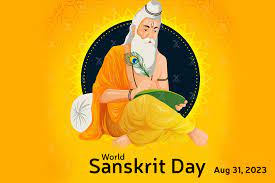
World Sanskrit Day, also known as International Sanskrit Day, Sanskrit Diwas, and Vishwa Samskrita Dinam, is observed on the Hindu calendar day of Shravana Poornima, also known as Raksha Bandhan, which corresponds with the moon. This year we will be celebrating Sanskrit Diwas on Thursday, 31st August. The purpose of this day is to raise awareness and promote Sanskrit, one of Indias oldest languages. Sanskrit holds importance as it serves as the foundation, for classical texts in disciplines such, as Literature, Philosophy, Mathematics and Science.
Daily Current Affairs Quiz: August 2023
Why is the World Sanskrit Day Celebrated?
World Sanskrit Day is celebrated on the full moon day of the Shraavana month in the Hindu calendar, which generally corresponds to the month of August in the Gregorian calendar. It is observed to promote and honour Sanskrit, an ancient Indian language.
Sanskrit is one of the oldest languages in the world, and it is considered to be the mother of all Indo-Aryan languages. It is a highly inflected language, with a complex system of grammar and morphology. Sanskrit is also a very expressive language, and it is used in a wide variety of literature, including poetry, drama, philosophy, and science.
There are many reasons why World Sanskrit Day is celebrated. Some of the reasons include:
- To promote the study and use of Sanskrit.
- To raise awareness of the importance of Sanskrit to Indian culture and heritage.
- To encourage the development of new research and scholarship on Sanskrit.
- To promote the use of Sanskrit in international communication.
- To celebrate the beauty and expressiveness of the Sanskrit language.
- World Sanskrit Day is a day to commemorate India’s rich history and culture, as well as to reassert the significance of Sanskrit as a living language. It is also a day to encourage the younger generation to learn Sanskrit and to appreciate its many benefits.
Significance of World Sanskrit Day
The significance of World Sanskrit Day or Sanskrit Diwas includes the following:
- To promote the ancient language Sanskrit, and highlight its historical, cultural, and intellectual value.
- Sanskrit is an important aspect of Indian culture. As a result, the goal of the day is to conserve this language for generations to come.
- World Sanskrit Day acknowledges the contribution of Sanskrit language in different fields like Literature, Science, Philosophy, and more.
- Currently, Sanskrit is not widely spoken in India. The purpose of World Sanskrit Day is to encourage people to study and use Sanskrit language.
- World Sanskrit Day promotes the linguistic, literary, and cultural qualities of Sanskrit on a global level.
History of World Sanskrit Day
World Sanskrit Day has a history that can be traced back, to 1969. It was during this year that the Indian Government decided to honor and celebrate the contributions of Pāṇini, a figure, in the realm of Sanskrit language and linguistics. On the occasion of his birth anniversary, the declaration was issued to remember Pinis work. This has been a special day since then. Celebrated by Sanskrit scholars and enthusiasts worldwide.
ISRO Aditya L1 vs. NASA Parker Solar Probe Their Sun’s Study Mission

India’s Aditya L1 and NASA’s Parker Solar Probe are both pioneering solar missions aiming to unravel the secrets of the Sun. While their goals are similar, their approaches, technology, and closeness to the Sun differ. This essay compares and contrasts these two exceptional missions.
Daily Current Affairs Quiz: August 2023
ISRO Aditya L1 Vs. NASA Parker Solar Probe: Mission Overview
Aditya L1: India’s Solar Mission
- Launch Date: Scheduled for September 2, via ISRO’s Polar Satellite Launch Vehicle (PSLV C-57).
- Orbit: Positioned at the L1 Lagrange point, 1.5 million kilometers from Earth, ensuring uninterrupted solar observation.
- Objective: Dedicated to studying the Sun’s activities and potential impacts on Earth’s technology.
- Instruments: Carries seven specialized instruments to capture images, analyze particles, measure magnetic fields, and study the Sun’s layers.
Parker Solar Probe: NASA’s Solar Endeavor
- Launch Date: Launched in 2018.
- Orbit: Orbits within 3.9 million miles of the Sun’s surface, venturing into the scorching corona.
- Objective: Investigate the solar corona, solar wind, and high-energy particles, as well as solar dynamics and space weather.
- Instruments: Equipped with four scientific instruments focusing on magnetic fields, plasma, energetic particles, and solar wind imaging.
Proximity to the Sun: A Key Contrast
- Aditya L1: Positioned strategically at the L1 Lagrange point, offering continuous observation from a distance.
- Parker Solar Probe: Unprecedentedly close to the Sun’s surface, within the corona, enduring extreme heat and radiation for direct data collection.
Differences in Payloads
Aditya L1’s Payloads
- VELC: Captures images and spectral data of the solar corona, providing insights into its temperature, velocity, and density.
- SUIT: High-resolution photography of the photosphere and chromosphere is provided, assisting in the understanding of these essential solar layers.
- SoLEXS: Observes soft X-rays, revealing surface activity on the Sun.
- HEL1OS: Provides crucial hard X-ray data for insights into high-energy solar phenomena.
- ASPEX: Enables in-situ analysis of solar wind particles, particularly protons and heavier ions.
- PAPA: Analyzes electrons and heavier ions in the solar wind through in-situ observations.
- Advanced Tri-axial High-Resolution Digital Magnetometers: Measures magnetic fields in the solar corona.
Parker Solar Probe’s Payloads
- FIELDS: Studies magnetic fields.
- ISIS: Investigates plasma.
- WISPR: Images the solar wind.
- SWEAP: Analyzes solar wind electrons, alphas, and protons.
ISRO Aditya L1 Vs. NASA Parker Solar Probe: Mission Objectives
- Aditya L1: Continuous monitoring from a distance to provide insights into solar activities and their potential impacts on Earth’s technology.
- Parker Solar Probe: Close encounters yield insights into solar wind acceleration, aiding predictions of satellite and communication system disruptions.
Solar Mission Landscape
Several other space agencies, including ESA, Japan, China, and Russia, have contributed to solar exploration. In 2018, NASA launched the Parker Solar Probe in collaboration with ESA, aiming to make direct contact with the Sun’s corona. The ‘Solar Orbiter,’ a NASA-ESA collaboration set to launch in 2020, intends to improve understanding of the Sun’s influence on space.
Aditya L1 Launch Date, Budget, Vehicle, Manufacturers, Destination Duration
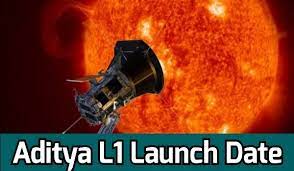
The Aditya L1 mission, led by the Indian Space Research Organisation (ISRO), represents a significant step forward in solar exploration. This pioneering endeavor aims to unlock the mysteries of the Sun’s corona, its outer atmosphere, and its impact on Earth’s climate and space environment. Equipped with state-of-the-art instruments, the Aditya L1 spacecraft will venture to the Lagrange Point 1 (L1), situated about 1.5 million kilometers from Earth.
Daily Current Affairs Quiz: August 2023
| Which companies are involved in Aditya-L1 mission? Larsen & Toubro (L&T), known for its pivotal role in Chandrayaan, is also collaborating with ISRO on Aditya-L1 and Gaganyaan missions. “We participate in the PSLV launch missions. |
Aditya L1: Launch Date: 2nd September 2023
The Aditya L1 mission is set to launch on September 2, 2023. The spacecraft’s strategic orbit at L1 allows it to continuously view both the Sun and the Earth, offering precise insights into solar phenomena like as the corona, solar flares, and other dynamic processes. High-resolution images and data across visible and ultraviolet wavelengths will facilitate a comprehensive understanding of the Sun’s behavior and its role in shaping space weather patterns.
Aditya L1: Collaborative International Effort
The Aditya L1 mission is a testament to India’s growing prominence in space exploration. This project exemplifies worldwide collaboration and scientific excellence, highlighting ISRO’s dedication to pushing the boundaries of space research. The mission’s ambitious objectives and cutting-edge technology underscore India’s commitment to fostering greater understanding of the universe’s most intriguing phenomena.
Aditya L1: Manufacturers: Cutting-Edge Engineering
Reputable Aditya L1 Manufacturers play a crucial role in crafting the spacecraft and its technologies. Collaborating with ISRO, these manufacturers design, build, and test the spacecraft, its instruments, and support systems. Innovative solutions and meticulous engineering are essential to withstand the harsh solar environment and collect precise data. This collaborative endeavour illustrates India’s breakthrough in space technology, which contributes to world scientific discovery and technological growth.
The Aditya L1 Vehicle: Technological Marvel
Developed by ISRO, the Aditya L1 vehicle is a remarkable achievement in India’s space journey. This spacecraft serves as a platform for studying the Sun’s corona and its influence on Earth’s climate and space weather. Equipped with advanced instruments and sensors, the Aditya L1 vehicle is engineered to withstand extreme space conditions, enabling precise observations of solar phenomena. It showcases India’s scientific and technological prowess while contributing significantly to the global pursuit of understanding the universe’s mysteries.
Aditya L1: Budget: Strategic Investment
The Aditya L1 mission, ISRO’s flagship project, commands a substantial budget that reflects its complexity and significance. The allocated funds cover spacecraft design, development, launch, and mission operations. The advanced instrumentation and expertise needed for studying the Sun’s corona are encompassed in the budget, including research, development, and testing phases. The budget, expected to be around 400 Crore, also accounts for contingencies, operational costs, and post-launch activities. This investment underscores India’s commitment to advancing its space capabilities and contributing to global scientific progress.
Aditya L1: Destination: Lagrange Point 1 (L1)
The Lagrange Point 1 (L1), 1.5 million kilometres from Earth, is Aditya L1’s destination. This orbital location offers a stable environment, enabling the spacecraft to maintain a consistent relative position with the Sun and Earth. By being stationed at L1, Aditya L1 gains an unobstructed view of the Sun, facilitating the study of the solar corona and dynamic processes with unparalleled accuracy. This destination also aids in understanding space weather phenomena and their impact on Earth’s magnetosphere and atmosphere. L1 was chosen as the destination after careful planning and engineering to ensure the mission’s success and valuable contributions to our comprehension of the Sun-Earth interaction.
India to host first-ever global AI summit in Oct, to boost innovation
India, as the current chair of the Global Partnership on Artificial Intelligence (GPAI) and the G20, is set to host the first-ever Global India AI 2023 Summit on October 14 and 15. This momentous event will bring together prominent figures in the field of Artificial Intelligence (AI), including researchers, startups, investors, and leading AI players, from around the world. The summit aims to bolster local innovation, showcase AI-enabled public infrastructure tools, and foster international collaboration.
First-ever Global AI summit: Leadership Opportunity through GPAI and G20
Assuming the chairmanship of GPAI in November, India has gained an unprecedented chance to take the lead in emerging technology. This summit marks a pivotal moment for India to showcase its capabilities in AI and contribute significantly to shaping the global technology landscape.
Diverse Strengths of India in AI
India’s diversity provides a unique advantage in AI development. The multitude of languages, cultures, and experiences in India enriches the quality of datasets for AI models. Rajeev Chandrasekhar, the Minister of State for Electronics and Information Technology, emphasized the importance of responsible AI to prevent harm while encouraging innovation.
Promoting Collaborative and Participatory AI
The primary goal of the summit is to promote a collaborative and participatory approach to AI development. This approach seeks to leverage AI’s potential to enhance governance, transform lives, and build global partnerships. India aims to actively shape the direction of technological advancements.
Key Topics and Deliberations at the Summit
The Global IndiaAI 2023 Summit will feature discussions on a wide array of AI applications, including healthcare, governance, and next-generation electric vehicles. Global experts will also explore future trends in AI research, AI computing systems, investment opportunities, and strategies for nurturing AI talent.
Showcasing IndiaAI Initiatives
The summit will serve as a platform to showcase India’s vibrant AI initiatives. These include Digital India Bhashini, the India Datasets program, IndiaAI Future Design program for startups, and the IndiaAI FutureSkills program focused on nurturing top-tier AI talent.
Catalyzing India’s AI Landscape and Innovation Ecosystem
Drawing inspiration from the success of past editions of the SemiconIndia conference, the Global IndiaAI summit aims to catalyze India’s AI landscape and innovation ecosystem. This event is expected to become a significant fixture on the global AI industry calendar.
Framework of IndiaAI Initiative
Under the IndiaAI program, the government has engaged in consultations with industry stakeholders to launch the India Datasets program. The initiative involves the establishment of working groups comprising government representatives, academic institutions, and startups. These groups have outlined a comprehensive framework for IndiaAI, encompassing AI in Governance, AI Computing & Systems, Data for AI, AI IP & Innovation, and Skilling in AI. These pillars will constitute a key part of the summit’s agenda.
Maharashtra Leads in Attracting FDI During 1st Quarter of FY 2023-24
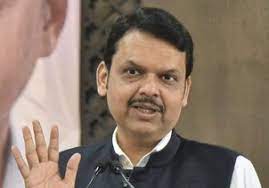
In the first quarter of the fiscal year 2023-24, Maharashtra has emerged as the front-runner in attracting Foreign Direct Investment (FDI). Deputy Chief Minister Devendra Fadnavis joyfully declared that the state had secured the top position by attracting FDI worth Rs 36,634 crore. This noteworthy achievement places Maharashtra ahead of other prominent states like Delhi, Karnataka, and Telangana, whose cumulative FDI values trail behind.
Daily Current Affairs Quiz: August 2023
Maharashtra’s FDI Dominance
Maharashtra’s FDI performance in the first quarter of FY 2023-24 has exceeded expectations, establishing its economic prowess. The FDI influx of Rs 36,634 crore alone exceeds the FDI received by Delhi, Karnataka, and Telangana combined over the same period of time. This achievement reiterates the state’s capability to entice foreign investment.
Continued Success: A Result of Strategic Leadership
The Deputy Chief Minister acknowledged that this accomplishment is a testament to the effective leadership provided by Chief Minister Eknath Shinde. Under their guidance, Maharashtra has been making rapid strides towards economic growth, transforming it into a favored investment destination. The state’s favorable business environment and infrastructure development have played a crucial role in attracting investors.
Fulfilling Promises: Maharashtra Reclaims Number One Status
Fadnavis emphasized that the current success stems from a commitment made by the government when it took office in June the previous year. Their promise to elevate Maharashtra to the top position has been realized through dedicated efforts and strategic policies. Maharashtra has effectively reclaimed its position as the top investment hub after losing it to other states.
Comparison with Previous Years: A Swift Turnaround
Reflecting on the recent achievement, Fadnavis noted that Maharashtra had held the top rank in investment until 2019. However, during the Uddhav Thackeray government’s time, the state temporarily lost its position to Gujarat, and then to Karnataka. Nevertheless, within a span of just one year, Maharashtra has reclaimed its coveted spot as the leader in attracting investments.
External Factors: Navigating Global Challenges
FDI trends across the nation have been influenced by external factors, such as the ongoing conflict in Ukraine and economic downturns in Europe. These global events have contributed to fluctuations in FDI inflows across the country, but Maharashtra’s consistent performance demonstrates its resilience in the face of such challenges.
National Nutrition Week 2023: Date, Importance and History

National Nutrition Week is an annual event in India that takes place from September 1st to September 7th. During this week, the nation comes together to raise awareness about the significance of proper nutrition and its role in maintaining a healthy lifestyle. This event acts as a reminder to people and communities to focus on their dietary habits and overall well-being.
Daily Current Affairs Quiz: August 2023
Importance of Nutrition
Nutrition is the science or practice of food consumption and use. Foods provide our body with energy, proteins, essential fats, vitamins and minerals to live, grow and function properly. A well-balanced diet is thus essential for good health and well-being. Many food-related ailments are claimed to be increased by an improper diet.
Good nutrition is necessary because
- Poor nutrition will reduce well-being.
- Helps maintain a healthy weight
- Provide energy.
- Delays the effect of aging.
- Maintains the immune system
- A healthy diet also has a positive effect on your mood.
- A healthy diet prolongs life.
- Reduces the risk of chronic diseases.
- Even a healthy diet increases concentration.
History of National Nutrition Week Celebration
National Nutrition Week was launched in March 1973 by members of the American Dietetic Association (now the Academy of Nutrition and Dietetics) to educate the public about the message of nutrition education while promoting the profession of a dietitian. In 1980, the public was well received and the week-long celebration became a month-long festival.
In 1982, the central Indian government launched the celebration of National Nutrition Week. The campaign was launched to educate citizens about the importance of nutrition and encourage them to adopt a healthy and sustainable lifestyle.
We all know that malnutrition is one of the main obstacles to the general development of the country needed to defeat and fight it. National Nutrition Week is celebrated.
NITI Aayog and UNDP Collaborate to Accelerate SDGs in India
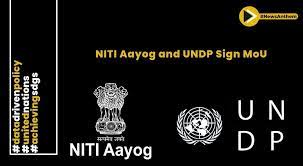
The National Institution for Transforming India (NITI Aayog), the central think tank responsible for monitoring India’s progress towards Sustainable Development Goals (SDGs), and the United Nations Development Programme (UNDP) have signed a significant Memorandum of Understanding (MoU) aimed at expediting India’s journey towards achieving its SDGs. This collaboration underscores the commitment to drive sustainable and inclusive development in the country.
Daily Current Affairs Quiz: August 2023
Key Focus Areas of the Collaboration
The MoU outlines a comprehensive framework for collaboration between NITI Aayog and UNDP, encompassing various vital areas related to SDGs and development initiatives.
- SDG Localisation: The collaboration will help to localise the SDGs, ensuring that these global goals are successfully integrated into India’s local development plans and strategies.
- Data-Driven Monitoring: Harnessing the power of data, both organizations will work together to enhance monitoring mechanisms, utilizing data-driven insights to track progress and make informed policy decisions.
- Aspirational Districts and Blocks: The collaboration will place special emphasis on initiatives like the Aspirational Districts and Blocks program, aiming to uplift and transform the most underdeveloped regions in India.
- Cooperative Federalism: Recognizing the significance of cooperative federalism, the collaboration aims to unite states and central entities in pursuit of common development goals.
- Showcasing India’s Successes: NITI Aayog and UNDP will collaborate to highlight India’s achievements in realizing its development priorities, serving as an inspiration and a model for other nations.
Envisioning a Data-Driven Future
BVR Subrahmanyan, CEO of NITI Aayog, expressed optimism about the partnership’s potential impact: “With monitoring going beyond districts down to the block level, we see this partnership fostering data-driven policy interventions and programmatic action.” This data-centric approach is expected to facilitate more precise and effective policy decisions, contributing to sustainable development.
UNDP’s Perspective
Shoko Noda, Resident Representative of UNDP India, highlighted India’s significant strides in poverty reduction, indicating that progress toward SDGs is feasible even in the face of complex challenges. The collaboration with NITI Aayog aligns with UNDP’s commitment to support localizing SDGs, promoting data-driven decision-making through various indices, advancing the Aspirational Districts and Blocks program, and facilitating SDG financing. The relationship also includes women’s livelihoods, innovation, and Mission LiFE.
Towards a Transformed Future
As India stands at the midpoint of the 2030 SDG agenda, this collaboration between NITI Aayog and UNDP emerges as a crucial step in accelerating progress. By pooling resources, expertise, and strategies, both organizations aim to contribute significantly to India’s sustainable development journey, creating a positive ripple effect that extends beyond national borders. The multi-year commitment reflected in the MoU indicates a long-term commitment to attaining the SDGs and crafting a more equitable and prosperous future for all.
Tata Steel and ACME Group Join Forces For India’s Largest Green Hydrogen Project Worth Rs 27,000 Crore In Odisha

In a significant partnership, ACME Group, a prominent renewable energy company, has joined forces with Tata Steel Special Economic Zone Ltd. (TSSEZL) to establish an expansive green hydrogen and green ammonia project within Odisha’s Gopalpur Industrial Park. This project is on track to become India’s largest facility of its sort, a significant step towards sustainable energy production.
Daily Current Affairs Quiz: August 2023
| SHORT QUESTION |
|---|
| Largest green hydrogen projects in the world NEOM Green Hydrogen Project, Saudi Arabia. Sinopec’s Ordos Green Hydrogen Project, China. FFI ad TES green hydrogen project, Germany. Plug Power Green Hydrogen Plants, Finland. Western Green Energy Hub (WGEH), Australia. |
India’s Largest Green Hydrogen Project Overview:
The project is set to be situated at the Gopalpur Industrial Park (GIP) in Odisha, strategically chosen for its logistical advantages and existing infrastructure. ACME Group has secured 343 acres of land within TSSEZL’s GIP to house the green hydrogen and derivatives unit, underlining their commitment to eco-friendly energy solutions. The estimated investment for the entire project amounts to Rs 27,000 crore, to be invested in progressive phases, reflecting the strategic approach to development.
Green Ammonia Production:
The project encompasses the establishment of a green ammonia production facility with a substantial capacity of nearly 1.3 MTPA (million tonnes per annum). Green hydrogen, created through the electrolysis process using renewable energy sources, will be used in the green ammonia facility. This facility’s location near the existing Gopalpur Port facilitates efficient export of the green ammonia to both western and eastern markets, leveraging the region’s connectivity.
Logistical Advantage and Infrastructure:
Gopalpur Industrial Park (GIP) stands out as an attractive investment destination due to its “plug-and-play” infrastructure, enabling seamless and swift establishment of projects. The utility corridor that connects GIP and Gopalpur Port ensures effective logistics and pipeline connectivity, hence improving the distribution process.
Environmental Significance:
Green hydrogen represents a pivotal advancement in the hydrogen industry. Unlike the conventional “grey” hydrogen production, it is generated through electrolysis using renewable energy sources. Traditional methods of manufacturing, such as steam methane reforming (SMR) from natural gas, emit considerable amounts of CO2, which contributes to climate change. Green hydrogen’s definition lies in its clean production process, involving water electrolysis powered by renewable energy sources like solar and wind.
Economic and Global Impact:
The collaborative effort seeks to deliver “Make in India” green hydrogen and green ammonia to both domestic and foreign markets, thereby fostering sustainable economic growth. By tapping into the potential of green hydrogen and its derivatives, the venture sets a positive precedent for India’s transition towards greener energy alternatives.
Chandrayaan-3’s Pragyan Rover Confirmes Sulphur Presence On The Surface Of Moon
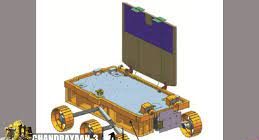
The Indian Space Research Organisation (ISRO) said in a breakthrough announcement that Chandrayaan-3’s Pragyan rover module has successfully confirmed the presence of sulphur (S) on the Moon’s surface. This significant revelation comes as a result of the first-ever in-situ recordings conducted near the lunar south pole. The confirmation of sulphur’s presence holds paramount importance in unraveling the Moon’s elemental composition and furthering our understanding of its geological history.
Daily Current Affairs Quiz: August 2023
Laser-Induced Breakdown Spectroscope (LIBS) Instrument Provides Unambiguous Confirmation
According to ISRO, the Laser-Induced Breakdown Spectroscope (LIBS) instrument onboard the Pragyan rover found the presence of sulphur on the lunar surface near the south pole. This achievement marks the first time that in-situ measurements have been used to confirm sulphur’s existence on the Moon. LIBS operates by exposing a material’s surface, such as soil or rock bed, to high-energy laser pulses. The resulting high-temperature plasma is collected and analyzed using instruments like Charge Coupled Devices (CCDs).
Diverse Elemental Composition Unveiled by Pragyan Rover’s LIBS Instrument
In addition to sulphur, Pragyan rover’s LIBS instrument has identified several other elements present on the lunar surface. Aluminium (Al), calcium (Ca), iron (Fe), chromium (Cr), titanium (Ti), manganese (Mn), silicon (Si), and oxygen (O) are among them. The presence of aluminium, sulphur, calcium, iron, chromium, and titanium has been visually portrayed in preliminary analyses. Further measurements have revealed the presence of manganese, silicon, and oxygen. ISRO is actively conducting a thorough investigation into the presence of hydrogen as well.
India’s Unique Position and Lunar Exploration Advancements
Anil Bhardwaj, the director of the Physical Research Laboratory, emphasized India’s advantageous position as the first country to successfully land near the Moon’s south pole on August 23. Bhardwaj highlighted that this achievement puts India in a pivotal role to collect groundbreaking data for the first time. The focus is on maximizing data collection efforts before the lunar sunset.
Mission Timeline and Prospects for Extension
The Chandrayaan-3 mission is scheduled to continue until September 6, a date corresponding to the Moon’s sunset. However, ISRO chairman S Somanath hinted at the possibility of extending the mission if the equipment proves resilient to the Moon’s low temperatures during the lunar night and can recharge itself once the Sun rises again on the lunar surface.
LIBS: Technology Behind the Discovery
The Laser-Induced Breakdown Spectroscope (LIBS) technology responsible for these groundbreaking findings was developed at the Laboratory of Electro-Optics Systems (LEOS), a unit within ISRO. LEOS is a company that specialises in the design, development, and manufacturing of attitude sensors for missions in low earth orbit (LEO), geostationary equatorial orbit (GEO), and interplanetary space.
Chandrayaan-3’s Objectives
Chandrayaan-3, a follow-up to the 2019 Chandrayaan-2 mission, has three primary objectives.
- First, it aims to successfully demonstrate a safe and soft landing on the lunar surface—a goal that eluded Chandrayaan-2.
- Second, the mission seeks to showcase the rover’s ability to navigate the lunar landscape.
- Third, Chandrayaan-3 aims to conduct in-situ scientific experiments, leveraging cutting-edge technologies to uncover new insights into the Moon’s composition and history.
As the Chandrayaan-3 mission continues its exploration journey, the insights gained from Pragyan’s discoveries promise to reshape our understanding of Earth’s natural satellite, opening new avenues for lunar research and space exploration.
Nitin Gadkari Launches World’s First Ethanol-Run Toyota Innova car

In a historic step towards a more sustainable automobile sector, Union Road Transport and Highways Minister Nitin Gadkari unveiled a stunning innovation: a 100% ethanol-fueled edition of Toyota’s Innova HyCross vehicle. The newly unveiled car stands as the world’s premier BS-VI (Stage-II) electrified flex-fuel vehicle, demonstrating the union of cutting-edge technology and a commitment to reducing carbon emissions.
Daily Current Affairs Quiz: August 2023
Revolutionizing Alternative Fuel Technology: Toyota Innova HyCross Leads with 100% Ethanol-Powered Capability
Flex-fuel vehicles (FFVs) come with internal combustion engines that are built to function using a variety of fuels, ranging from usual gasoline to more ecologically friendly options like ethanol.
The Toyota Innova HyCross is distinguished by its capacity to run solely on 100% ethanol, which was previously thought to be impossible due to technical restraints and fuel constraints. In the past, FFVs have predominantly operated using a blend of gasoline and ethanol, with the highest proportion of ethanol usually capping at around 83%. Nevertheless, this fresh iteration of the Innova HyCross challenges the norm by wholeheartedly adopting ethanol as its singular energy source.
Ethanol’s Environmental Benefits: Enhancing Combustion Efficiency and Emission Reductions
Ethanol’s green credentials extend beyond its renewable origin. This biofuel boasts qualities that support complete combustion, resulting in reduced carbon monoxide emissions. According to government data, utilising E20 fuel results in significant reductions in carbon monoxide emissions—50% lower in two-wheelers and 30% lower in four-wheelers. Hydrocarbon emissions, another significant contributor to air pollution, were also reduced by 20%. While nitrous oxide emissions displayed varied trends based on vehicle/engine type and operating conditions, the overall impact of ethanol on emissions reduction is evident.
Paving the Path to Cleaner Air and Water: The Role of Green Fuels
The unveiling of the 100% ethanol-fueled Innova HyCross underscores the urgency of transitioning to alternative and greener fuels in the pursuit of sustainable development. Nitin Gadkari recognised the significance of this transition, adding that while substantial progress has been made in sustainability, more efforts are needed to battle pollution and protect the environment.
Key takeaways for competitive examinations
- India’s target of achieving a 20% ethanol blend with petrol by: 2025
Bandhan Bank Authorized by RBI for Civil Pension Disbursement
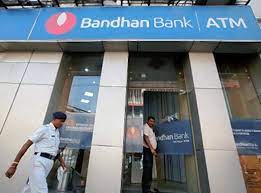
Bandhan Bank has been authorised by the Reserve Bank of India (RBI) to function as an authorised pension disbursement bank, which is a significant development. This authorisation is in collaboration with the Central Pension Accounting Office (CPAO), which is part of the Ministry of Finance. The bank intends to work closely with the CPAO to commence and streamline the disbursement of civil pensions.
Daily Current Affairs Quiz: August 2023
| SHORT QUESTION |
|---|
| What is pension disbursement? Pension can be drawn either through the Branch of a Public Sector Bank or through Treasury. The Accounts Officer after going through all the procedures will issue the Pension Payment Order to the Central Pension Accounting Office who will issue the Special Seal Authority to the concerned Bank/Treasury. |
Empowering Financial Services for Civil Pensioners
Bandhan Bank’s unexpected role as an authorised pension payout bank has far-reaching consequences for a wide variety of beneficiaries. This authorization enables the bank to effectively disburse pensions to a variety of recipients:
- Central Government Employees: The bank is in charge of distributing pensions to retired employees of Civil Ministries and Departments, excluding Railways, Posts, and Defence.
- Territorial Scope: Bandhan Bank’s responsibilities include pension payment for the National Capital Territory of Delhi and Union Territory Administrations without legislatures.
- Judicial Retirees: Retired Judges from the High Courts and the Supreme Court are also covered under this scheme, ensuring their pension payments are managed efficiently.
- All India Service Officers: The bank’s permission includes the payment of pensions to All India Service Officers in order to meet their financial demands after retirement.
- Former Parliament Members: This scheme extends its coverage to the payment of pensions for former Members of Parliament, ensuring their financial well-being after their tenure.
- Distinguished Leaders: Additionally, pensions and various amenities for former Presidents and Vice Presidents of India fall within the purview of this scheme.
Bank’s Commitment to Streamlined Service
Debraj Saha, the Head of Government Business at Bandhan Bank, expressed the institution’s commitment to ensuring efficient pension disbursement. Saha highlighted the pivotal role the bank now plays in securing retirees’ financial stability during their golden years. The bank’s improved ability to provide efficient, secure, and timely services is expected to considerably benefit retirees. Saha extended gratitude to regulatory authorities for entrusting the bank with this crucial mandate.
India win inaugural Women’s Asian Hockey 5s World Cup Qualifier, beat Thailand 7-2 in final

What’s in News?
India won the inaugural Women’s Asian Hockey 5s World Cup Qualifier on August 28th, defeating Thailand 7-2 in the final. The final match witnessed an outstanding performance by the Indian side, as they triumphed over Thailand with an impressive score of 7-2. This victory marked not only their Asian Cup but also secured their coveted spot in the forthcoming Women’s Hockey 5s World Cup 2024.
Daily Current Affairs Quiz: August 2023
Dominant Display by India’s Scorers
India demonstrated their aggressive intent from the start, with Mariana Kujur delivering a strong field goal in the second minute. This early advantage set the tone for their confident play, showing their readiness to stake their claim for the Asia Cup title. However, Thailand didn’t take long to respond, swiftly netting two goals through Kunjira Inpa and Sanpoung Kornkanok, pushing India into onto the defensive.
India’s Swift Retaliation
In a quick counterattack, Monika Dipi Toppo demonstrated her form and precision with a stunning goal in the 7th minute, tying the game at 2-2. The Indian team’s performance remained unwavering and Mariana Kujur rekindled the lead with another goal in the 8th minute.
Steady Accumulation of Goals
Jyoti extended India’s lead further, marking a score of 4-2. After the halftime break, India showed no signs of slowing down, maintaining their peace and precision in their attacks. Their relentless efforts paid dividends as Captain Navjot Kaur contributed a fifth goal to India’s tally.
A Decisive Triumph
With just three minutes remaining in the match, Jyoti’s efforts were rewarded once more, further securing India’s lead at 6-2. To seal their Mahima Choudhary added another goal, solidifying the final score at 7-2 in favor of India.
Road to Victory
Prior to the final, India had demonstrated their prowess by success over Malaysia with a remarkable score of 9-5, securing their spot in the championship match. In this semi-final clash, Navjot’s excellent performance stood out as she achieved a hat-trick, supported by goals from Kujur, Jyoti, Toppo and Choudhary. Malaysia’s Zati Muhamad, Dian Nazeri and Aziz Zafira also showcased their skill by finding the net.
Recognition and Rewards
In acknowledgement of the India’s outstanding achievements, Hockey India proudly announced a reward of Rs.2 lakh for each player on the victorious squad, along with Rs.1 lakh reward for each member of the support staff. This gesture not only celebrates the team’s success, but also recognises the team’s joint effort and sacrifice that resulted to his historic achievement.
Qualified for the World Cup 2024
The Indian women’s hockey team’s win in the Women’s Hockey 5s Asia Cup not only etches their name in history, but it also opens an exciting new chapter in their path. The victory secures their participation in the upcoming FIH Women Hockey 5s World Cup Oman 2024, providing them with an opportunity to showcase their skills on a global platform.

